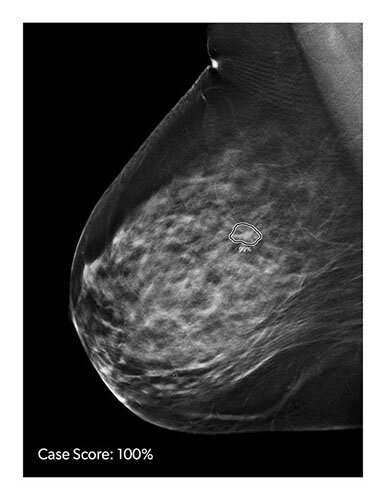Use of High-Temperature Superconductors to Make MR Imaging More Affordable, Accessible and Sustainable
|
By MedImaging International staff writers Posted on 07 Dec 2022 |

A new research partnership focuses on the use of high-temperature superconductors to make MR imaging more affordable, accessible and sustainable in the future. Operating at higher temperatures and eliminating the use of liquid helium during both production and operation could reduce the size, weight and cost of MRI scanners, increasing accessibility across all patient communities and bringing advanced diagnostic imaging closer to a first line diagnostic tool.
Royal Philips (Amsterdam, Noord-Holland) has entered into a research partnership with magnet solutions provider MagCorp (Tallahassee, FL, USA) to explore superconducting magnets for MR scanners that do not require cooling to ultra-low temperatures (-452 °F or -269 °C) using liquid helium. Developing more sustainable alternatives to helium-cooled MRI magnets at a lower cost has the potential to offer significant benefits by making advanced MR imaging available to more patients in more diverse settings as well as potentially reducing radiology department capital and operating costs.
Operating at higher temperatures closer to ambient room temperature and eliminating liquid helium from both the production and operation of MRI scanners provides two major advantages. First, it decreases energy consumption required to sustain operation and reduces dependence on a finite and increasingly scarce natural resource, produced largely as a by-product of fossil-fuel (natural gas) extraction. Conventional MRI scanners often vent helium, which once released into the atmosphere escapes into outer space never to be seen again. Second, and just as important, it has the potential to reduce the size, weight and costs of MRI scanners. As a result, MRI’s superior diagnostic and functional imaging capabilities – notably its excellent soft-tissue imaging and absence of ionizing X-ray radiation – could be enjoyed by a larger number of patients, expanding access into underserved communities. The partnership between Philips and MagCorp aims to help realize these two major advantages.
With the introduction of its BlueSeal magnet technology in 2018, Philips already has a commercially available non-venting MRI scanner in widespread use that once charged with a small amount of helium (7 liters instead of a conventional scanner’s 1,500 liters) are sealed and operate without requiring additional helium for their entire operational life. Clinical MRI scanners that completely eliminate the need for helium are a clear direction for innovation in the long term. Using high-temperature superconductors supports a complete shift towards helium independence. The research partnership will focus on characterizing and demonstrating the feasibility of appropriate superconducting materials capable of operating at higher temperatures than today’s niobium-based superconductors. In common with helium, niobium is also a scarce element, whereas some of the new materials being investigated by the research team are based on more abundant elements. In addition to basic materials research, the team will also investigate the steps needed to commercialize the materials, and the technologies needed to enable their use in future MRI scanners.
“Florida State University’s MagLab, part of the U.S. National High Magnetic Field Laboratory, is home to many of the world’s leading researchers on novel superconducting materials that don’t require liquid helium temperatures to operate. Philips has decades of MR scanner design and development experience, including most recently the launch of the BlueSeal magnet technology,” said Josh Hilderbrand, Director, Head of MRI Magnet Research and Development at Philips. “Combining these resources with MagCorp’s research facilitation services will help leverage the latest technology to accelerate access and availability of MRI to more patients and healthcare providers.”
“MagCorp is proud of this partnership, which brings together Philips' game-changing BlueSeal magnet technology and the FSU MagLab’s unrivaled knowledge base about superconductors that can operate in a helium-free environment," said Jeff Whalen, Director of MagCorp. "Combining Philips' forward-thinking approach with FSU MagLab's scientists, who have a wealth of relevant expertise in the application of new superconductors, means Philips will be in the best position to develop innovations around this technology."
Related Links:
Royal Philips
MagCorp
Latest Industry News News
- Bayer and Google Partner on New AI Product for Radiologists
- Samsung and Bracco Enter Into New Diagnostic Ultrasound Technology Agreement
- IBA Acquires Radcal to Expand Medical Imaging Quality Assurance Offering
- International Societies Suggest Key Considerations for AI Radiology Tools
- Samsung's X-Ray Devices to Be Powered by Lunit AI Solutions for Advanced Chest Screening
- Canon Medical and Olympus Collaborate on Endoscopic Ultrasound Systems
- GE HealthCare Acquires AI Imaging Analysis Company MIM Software
- First Ever International Criteria Lays Foundation for Improved Diagnostic Imaging of Brain Tumors
- RSNA Unveils 10 Most Cited Radiology Studies of 2023
- RSNA 2023 Technical Exhibits to Offer Innovations in AI, 3D Printing and More
- AI Medical Imaging Products to Increase Five-Fold by 2035, Finds Study
- RSNA 2023 Technical Exhibits to Highlight Latest Medical Imaging Innovations
- AI-Powered Technologies to Aid Interpretation of X-Ray and MRI Images for Improved Disease Diagnosis
- Hologic and Bayer Partner to Improve Mammography Imaging
- Global Fixed and Mobile C-Arms Market Driven by Increasing Surgical Procedures
- Global Contrast Enhanced Ultrasound Market Driven by Demand for Early Detection of Chronic Diseases
Channels
Radiography
view channel
Novel Breast Imaging System Proves As Effective As Mammography
Breast cancer remains the most frequently diagnosed cancer among women. It is projected that one in eight women will be diagnosed with breast cancer during her lifetime, and one in 42 women who turn 50... Read more
AI Assistance Improves Breast-Cancer Screening by Reducing False Positives
Radiologists typically detect one case of cancer for every 200 mammograms reviewed. However, these evaluations often result in false positives, leading to unnecessary patient recalls for additional testing,... Read moreUltrasound
view channel
Deep Learning Advances Super-Resolution Ultrasound Imaging
Ultrasound localization microscopy (ULM) is an advanced imaging technique that offers high-resolution visualization of microvascular structures. It employs microbubbles, FDA-approved contrast agents, injected... Read more
Novel Ultrasound-Launched Targeted Nanoparticle Eliminates Biofilm and Bacterial Infection
Biofilms, formed by bacteria aggregating into dense communities for protection against harsh environmental conditions, are a significant contributor to various infectious diseases. Biofilms frequently... Read moreNuclear Medicine
view channel
New SPECT/CT Technique Could Change Imaging Practices and Increase Patient Access
The development of lead-212 (212Pb)-PSMA–based targeted alpha therapy (TAT) is garnering significant interest in treating patients with metastatic castration-resistant prostate cancer. The imaging of 212Pb,... Read moreNew Radiotheranostic System Detects and Treats Ovarian Cancer Noninvasively
Ovarian cancer is the most lethal gynecological cancer, with less than a 30% five-year survival rate for those diagnosed in late stages. Despite surgery and platinum-based chemotherapy being the standard... Read more
AI System Automatically and Reliably Detects Cardiac Amyloidosis Using Scintigraphy Imaging
Cardiac amyloidosis, a condition characterized by the buildup of abnormal protein deposits (amyloids) in the heart muscle, severely affects heart function and can lead to heart failure or death without... Read moreGeneral/Advanced Imaging
view channel
New AI Method Captures Uncertainty in Medical Images
In the field of biomedicine, segmentation is the process of annotating pixels from an important structure in medical images, such as organs or cells. Artificial Intelligence (AI) models are utilized to... Read more.jpg)
CT Coronary Angiography Reduces Need for Invasive Tests to Diagnose Coronary Artery Disease
Coronary artery disease (CAD), one of the leading causes of death worldwide, involves the narrowing of coronary arteries due to atherosclerosis, resulting in insufficient blood flow to the heart muscle.... Read more
Novel Blood Test Could Reduce Need for PET Imaging of Patients with Alzheimer’s
Alzheimer's disease (AD), a condition marked by cognitive decline and the presence of beta-amyloid (Aβ) plaques and neurofibrillary tangles in the brain, poses diagnostic challenges. Amyloid positron emission... Read more.jpg)
CT-Based Deep Learning Algorithm Accurately Differentiates Benign From Malignant Vertebral Fractures
The rise in the aging population is expected to result in a corresponding increase in the prevalence of vertebral fractures which can cause back pain or neurologic compromise, leading to impaired function... Read moreImaging IT
view channel
New Google Cloud Medical Imaging Suite Makes Imaging Healthcare Data More Accessible
Medical imaging is a critical tool used to diagnose patients, and there are billions of medical images scanned globally each year. Imaging data accounts for about 90% of all healthcare data1 and, until... Read more
Global AI in Medical Diagnostics Market to Be Driven by Demand for Image Recognition in Radiology
The global artificial intelligence (AI) in medical diagnostics market is expanding with early disease detection being one of its key applications and image recognition becoming a compelling consumer proposition... Read moreIndustry News
view channel
Bayer and Google Partner on New AI Product for Radiologists
Medical imaging data comprises around 90% of all healthcare data, and it is a highly complex and rich clinical data modality and serves as a vital tool for diagnosing patients. Each year, billions of medical... Read more




















